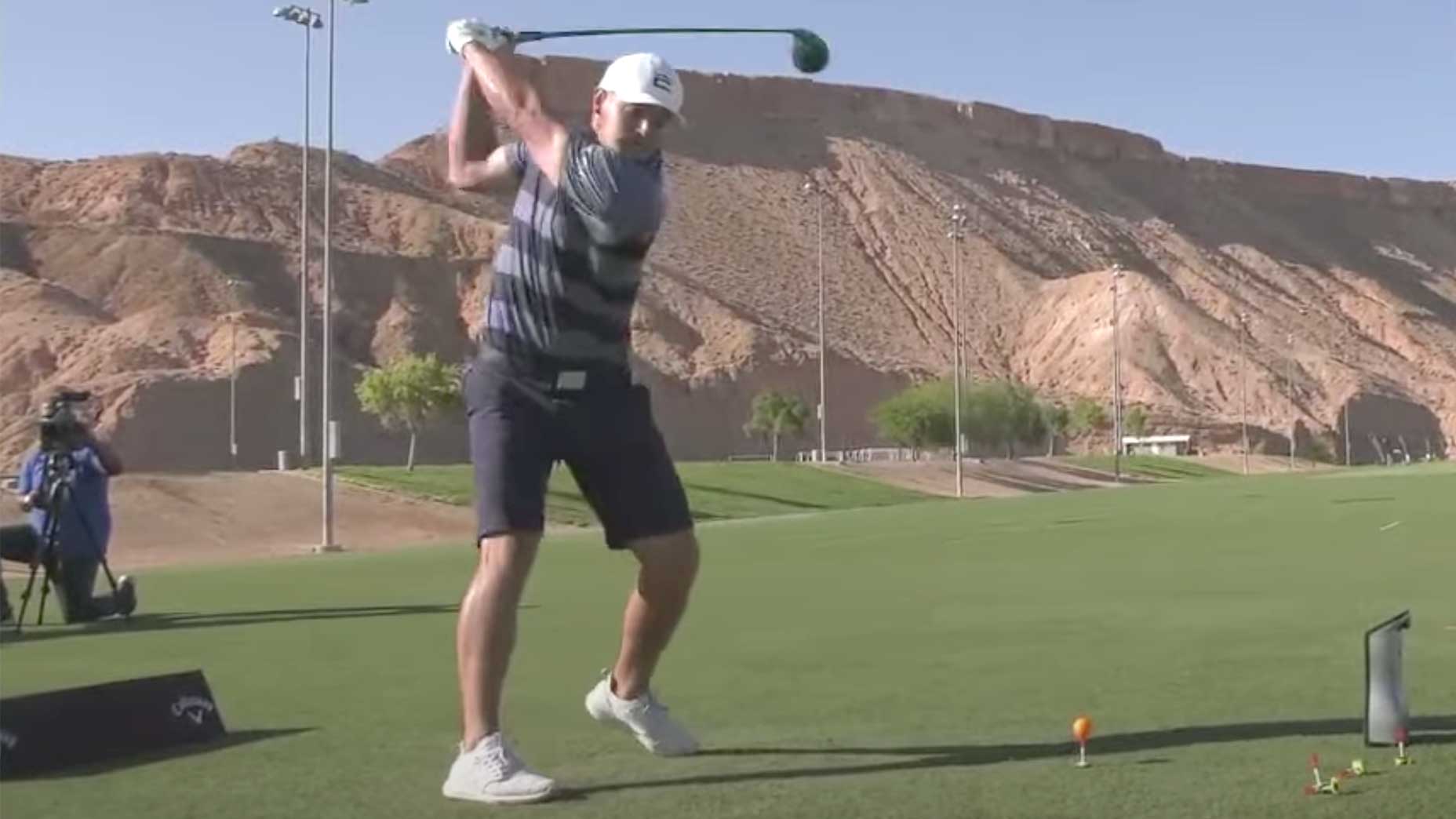Perhaps it was obvious from the beginning that Bryson DeChambeau’s appearance at the World Long Drive Championships was fundamentally altering the sport. After all, the easiest way to know something had changed on the ground in Mesquite, Nev., came well before anyone caught a glimpse of DeChambeau pounding drives into the ether.
The Bryson Effect could initially be observed at the gated entry to the Mesquite Sports Complex, where, for the first time ever, the Professional Long Drivers Association charged people a fee to watch the action in person.
“We didn’t really want to do that but we had to,” Bobby Peterson, the PLDA’s de facto commissioner, said in a telephone interview this week. “We had to do it just to cover the expenses, because we don’t have a major sponsor to help it.”
Peterson is a long drive lifer, and he looks the part — tall with thick shoulders, high-and-tight, salt-and-pepper hair and large, wraparound sunglasses. He speaks with a Southern drawl, and when he’s not competing in the senior division at long drive events, can be found running the “One Stop Power Shop,” a full-service long drive factory in Newton Grove, N.C. Peterson builds drivers for aspiring long drive pros, structures their training sessions and otherwise lends an ear to those hoping to add distance to their game (like DeChambeau, with whom Peterson frequently conversed during tournament week).
After Golf Channel left the sport in the early stages of the pandemic, Peterson was among the first to formulate the idea of creating what he called a “grassroots long drive tour.” After meeting with some of the game’s other stakeholders, he drafted the charter for the Professional Long Drivers Association. The tour is technically player-run, but on tournament days, people answer to Peterson, who also handles the finances.
It was Peterson’s call to charge a gate-entry fee, a landmark decision for a league that has rarely ever had to worry about a glut of fans. For $10, anyone who wished to enter could watch the game’s longest hitters compete for a full day, with action running from sun-up to sundown. Of course, the star of the show was DeChambeau, who flew to Mesquite fresh off helping the Americans clinch a convincing win at the Ryder Cup, and was the first pro to compete in a long drive event in several decades.
The price was right. Fans swarmed the event, pressing up against the gates to get a closer look at the PGA Tour’s longest-hitter on the range. When it came time for DeChambeau to compete “on the grid,” on-lookers packed the bleachers, leaving dozens to stand in the aisles and alleyways. The environment was chaotic. Fans hooted as music blasted from speakers, cheering as DeChambeau blasted drive after drive.
“I’ve been to a lot of long drive tournaments, that was probably the most energetic one that I could possibly remember,” Peterson said. “The energy level at that event was just incredible.”
And yet, the response on the ground paled in comparison to the one on the Internet. Fans surged into the PLDA website, briefly crashing it on Tuesday morning and, eventually, racking up more than a half-million hits on Wednesday alone. Due to the sport’s not-yet-existent TV partnerships, the tournament’s broadcast was a grainy, YouTube livestream. And yet, highlights from Friday’s round of 16 have wracked up more than 768,000 viewers to date.
During last week’s Bryson-mania, the PLDA saw its Instagram following nearly triple — from 11,000 to 28,000 followers — and watched as its YouTube channel comfortably crossed the 20,000 subscriber threshold.
“I think it was super-critical, because our mandate as an organization was to respect the players and create an opportunity for them to showcase their talents,” Peterson said. “The other thing is, we had to showcase as an organization with potential to sponsors. Companies that want to be involved, that want to showcase their brands along with ours. This was almost like a sales presentation.”
To that end, DeChambeau’s appearance served its purpose. Peterson and others received phone calls from a host of sponsors hoping to engage in the sport — business they admit didn’t exist before DeChambeau landed in Mesquite.
“Yeah, there’s been a lot of interest, a lot of buzz,” Peterson said. “We actually have some calls this afternoon, and Bryson obviously has opened some doors that were probably never going to be open without his help and influence. So we have a call this afternoon with a couple of parties and we’ll see what happens. Fingers crossed.”
While every indication from DeChambeau would seem to suggest his performance was only the beginning of a long and fruitful partnership with the sport, Peterson and Co. need to plan as if that won’t be the case. Fortunately, he says, the sport is well-stocked with talent, even if DeChambeau doesn’t return to the long drive.
“We’ve literally got probably 20 more competitors out there around the world that we know are as fast as the guys that were in the top 32,” Peterson said. “So, that holds well for us once international travel restrictions are lifted.”
After a week in Mesquite, it’s clear the calculus has changed for the world of long drive. Now, comes the biggest question: Can the sport capitalize on it?
“I don’t know if it’s mission accomplished, but I think that we won a huge battle,” Peterson said. “We’ve touched people who maybe have never heard of us before. Our hopes and dreams are that the people that did hear about us will go out and tell someone. They’ll go to the driving range and see a person just hit bombs and say, ‘Hey, have you heard of this sport?'”
